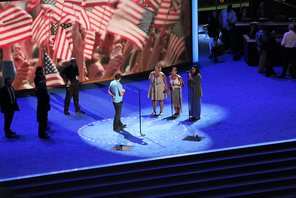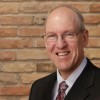
Some may think the real question is how Utah’s capital city made it on the list in the first place of cities the Democratic Party asked to bid on the 2016 national convention. This isn’t exactly a hotbed for Democrats. Hillary Clinton might even have to wait in line for a cab when she arrived.
But the better question is what the local economy would
| | have gotten out of it, and the answer to that is not much. It would have been the same answer, by the way, if the Republicans were coming here, which nearly happened in 2012. It’s the same answer you would get even if the Super Bowl were to come here. And the same answer, by the way, when you wonder what the public funding for that beautiful soccer stadium in Sandy has brought us, despite how well the team is doing and despite how much fun it is to go to a game. Which is why it was nice to hear that local Democrats decided this week to withdraw Salt Lake City from contention. Speaking of soccer, the new head of the state Democratic Party, Peter Corroon, was one of the rare public officials a few years ago who understood that taxpayer support for the stadium was not the best use of money. As Salt Lake County mayor at the time, he got run over by Republican state lawmakers who forced a subsidy, anyway. When I contacted him yesterday, Corroon showed he hadn’t lost that quality of fiscal common sense, which seems about as common among politicians as snow in July. “Even if we had every hotel filled for several days, I’m not sure it would make a lot of financial sense,” he said about hosting his party’s national show. At least, not with the infrastructure that exists right now in the Salt Lake valley, he said, implying there may be a time in the future when the convention in Utah would make sense. Trust me, it really wouldn’t. As Victor Matheson, an associate professor at the College of Holy Cross, told outsidethebeltway.com two years ago, public officials are great “at adding and multiplying” all the money an event brings in. “They’re not good at subtracting.” In the 21st century, major public events can turn cities into minimum-security prisons. Armed officers roam the streets. Protesters try to wreak havoc. Access is limited. Many businesses find it easier to close for the duration, and some people who otherwise might pay a visit choose to go anywhere else. Bars, restaurants and hotels do well. Everyone else, not so much. People might not like to hear it, but this is exactly what happened during the 2002 Winter Olympics. A 2007 study by economics professor Michael A. Leeds of Temple University found that everyday skiers went to Colorado during that time, rather than coming here. A 2008 study by Philip K. Porter of the University of South Florida and Deborah Fletcher of Miami University in Ohio found that neither hotel traffic nor airplane traffic changed much during those two weeks. There were just different people coming and going than usual. Yes, there was all that free publicity for two weeks, and the area has benefitted as a training facility and by continuing to host winter events, but political conventions — which today are giant infomercials millions of Americans ignore — don’t provide anywhere near the same lasting effects. Imagine local Democrats had said yes. You could almost hear the boosters and the people whose job it is to promote the state tell how a major political convention would bring in hundreds of millions of dollars and put the state “on the map.” That’s what folks in the cities who remain in the hunt are saying — even in Denver, where they ought to know better. The more astute among you may be wondering about this alleged mapmaker who seems unable to remember to save room for Utah despite an NBA All Star game, two NBA finals and a winter Olympics, each of which was promoted as a way to get us on the map. Seems we’re doing quite well without this elusive and challenged cartographer. Let’s stop chasing him. |

 RSS Feed
RSS Feed

